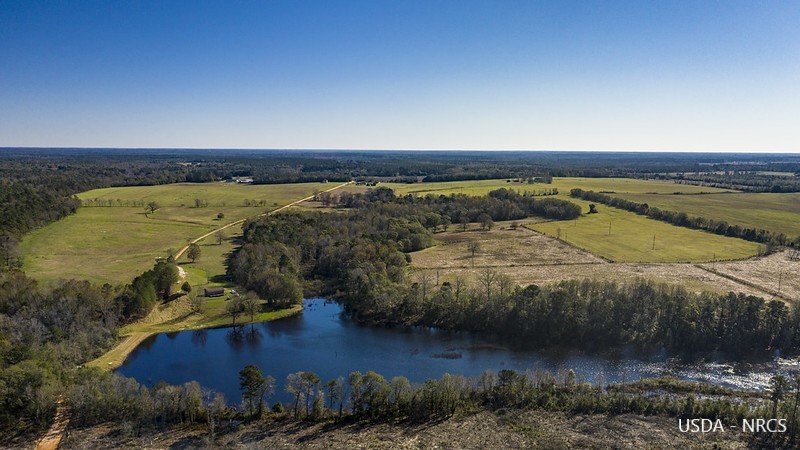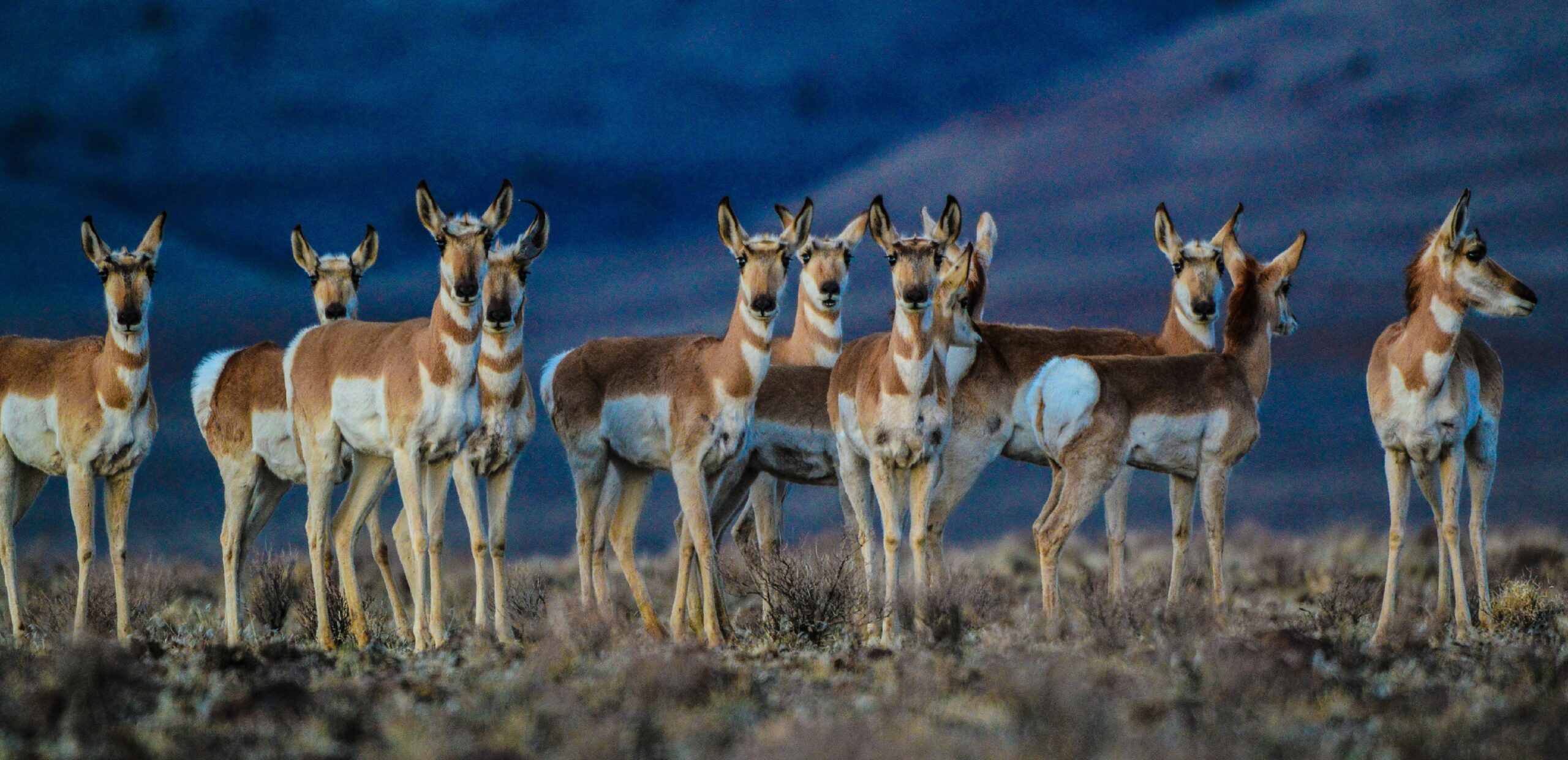We have much more to do and your continued support is needed now more than ever.
Farm Bill Expiration and Consequences for Wildlife Conservation

The Agricultural Improvement Act of 2018, more commonly known as the Farm Bill, is an enormous bill spanning all aspects of food and farm policy including important wildlife programs. It provides America’s largest investment in conservation on farms, ranches, and private lands. Farm Bill conservation programs, which are run through the U.S. Department of Agriculture (USDA), provide tools to enable farmers, ranchers, and forest owners to steward land for future generations and improve water, wildlife habitat, soil, and the climate.
Conservation programs restore and enhance wetlands where ducks, other waterfowl, and game thrive, create habitat for bees and other pollinators, and provide technical assistance to help farmers and ranchers learn how they can adopt more sustainable practices in their operations. One success is the Greater Sage-Grouse Initiative where USDA worked with 2,500 ranchers to restore 9 million acres of sagebrush habitat across 11 states. In all, these programs currently apply to over 45 million acres of land in the country, an area larger than the state of Oklahoma.
The current Farm Bill expired on September 30th, 2023, threatening USDA’s ability to get farmers and ranchers the conservation resources they want and need. The good news is that funding will continue to flow to some of the conservation programs run through USDA, but not all. Farm Bill expirations are relatively common, so the expiration by itself is not entirely unexpected and the worst effects won’t be felt immediately. In fact, every Farm Bill going back to 2002 expired before a new bill was passed. However, if Congress is unable to get a new bill passed by the start of 2024, Farm Bill law reverts to New Deal-era laws that would have serious negative consequences for people across the country, whether they farm, work in conservation, or shop at a grocery store. It is vital that a new Farm Bill passes, or the current bill is extended, so that USDA conservation programs can continue to work. United States’ private landowners, farmers, ranchers, and wildlife depend on it.

What does expiration mean for USDA’s Conservation Programs?
The good news for conservation is that many NRCS programs will continue, in part thanks to the Inflation Reduction Act (IRA) and its historic $20 billion investment in climate-smart conservation. IRA extended several USDA programs to 2031, including the Environmental Quality Incentives Program (EQIP), the Conservation Stewardship Program (CSP), the Regional Conservation Partnership Program (RCPP), and the Agricultural Conservation Easement Program (ACEP) through Sept. 30th, 2031.
The bad news is that programs that did not receive additional funding through IRA, like the Conservation Reserve Program (CRP) — a critical program for wildlife habitat conservation — will not be able to take on new applications or do new work until they are reauthorized. Through 10-,15-, or 30-year contracts, CRP pays a reasonable rate to landowners to remove environmentally sensitive land from production to benefit wildlife, water, and soil health. The program has a long track record of success for wildlife conservation, with close to 27 million acres of land currently enrolled in the program including vital habitat for sage grouse, lesser prairie chicken, bobwhite quail, ducks, and countless other wildlife. For example, the U.S. Fish and Wildlife Service estimates CRP acres in the Prairie Pothole Region in the northern Great Plains adds about 2 million ducks to the fall flight every year.
IRA also did not extend every initiative within conservation programs, such as the Feral Swine Eradication and Control Pilot, the Voluntary Public Access and Habitat Incentive Program, and the Healthy Forest Restoration Program, among other important programs that help with wildlife support and invasive species control.
Thankfully, the 10% for wildlife funding requirement within EQIP was extended through 2031, a major victory for NWF and the wildlife community who fought for the carveout in the 2018 Farm Bill.
What’s Congress going to do next?
The million-dollar question! We know that both the Senate and House are hard at work writing their versions of the Farm Bill. Once those are passed through each respective chamber, the House and Senate will hold a conference to reconcile their versions of the bill, bring it back to each chamber to be passed, and then it will head to the President’s desk for his signature to become law. Currently, it’s unclear if the new Farm Bill will be passed before 2024, creating an opportunity to let lawmakers know about the importance of wildlife conservation to their communities.
To do that, Congress will need to decide if they will fulfill the promise made to farmers and ranchers when it enacted IRA’s once-in-a-generation $20 billion investment in climate-smart agriculture and conservation. Some in Congress would like to move the $20 billion for priorities that would not benefit wildlife or the vast majority of farmers, ranchers, and private landowners. This is despite the fact a recent poll showed that nearly three-quarters of farmers across the country think there should be more conservation funding, not less. In 2023, farmers applied for more than twice as much IRA funding as USDA had available, continuing a troubling trend that has been going on for decades.
Act Now! Tell Congress to pass a Wildlife-Friendly Farm Bill!
The next couple of months will be critical for the fate of the Farm Bill and USDA conservation programs. Please join National Wildlife Federation in calling for a wildlife-friendly, bipartisan Farm Bill that meets the demand from farmers, ranchers, private landowners, and the communities they live in for strong, well-funded conservation programs. Let your elected officials know that you care about a wildlife-friendly Farm Bill by contacting your representative below.

For more information about conservation in the Farm Bill, check out the links below:
- NWF’s Farm Bill Recommendations
- NWF’s CEO Collin O’Mara pens op-ed about the importance of the Conservation Reserve Program with other conservation organization leaders
- Jonathan Coppess, University of Illinois, explores NRCS conservation backlogs and the positive effects IRA will have on them
- The Congressional Research Service digs into Farm Bill expiration here (conservation starts on page 10)





















